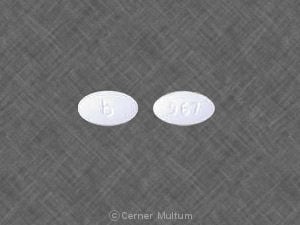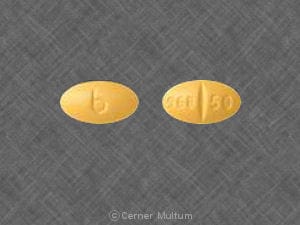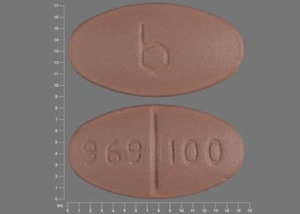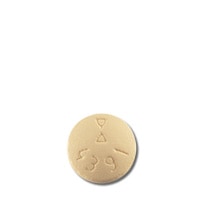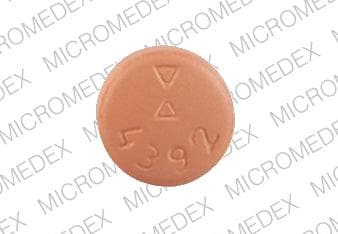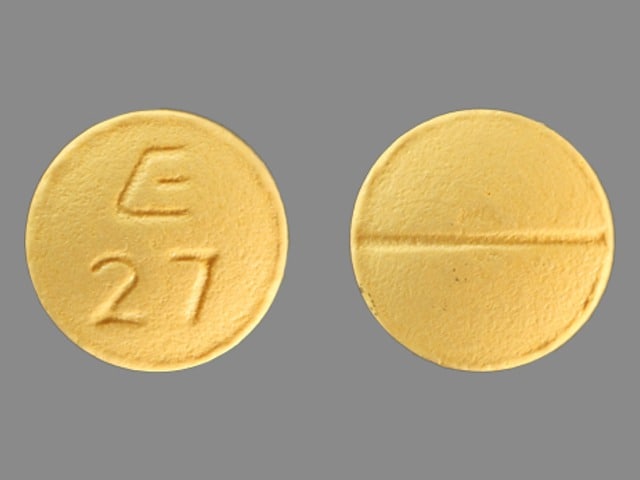Boxed Warning
Suicidality and antidepressant drugs:
Antidepressants increased the risk compared with placebo of suicidal thinking and behavior (suicidality) in short-term studies in children, adolescents, and young adults with major depressive disorder (MDD) and other psychiatric disorders. Anyone considering the use of fluvoxamine in a child, adolescent, or young adult must balance this risk with the clinical need. Short-term studies did not show an increase in the risk of suicidality with antidepressants compared with placebo in adults older than 24 years; there was a reduction in risk with antidepressants compared with placebo in adults 65 years and older. Depression and certain other psychiatric disorders are associated with increases in the risk of suicide. Closely observe and appropriately monitor patients of all ages who are started on therapy for clinical worsening, suicidality, or unusual changes in behavior. Advise families and caregivers of the need for close observation and communication with the health care provider. Fluvoxamine immediate release is not approved for use in pediatric patients, except for patients with obsessive-compulsive disorder (OCD). Fluvoxamine extended release (ER) has not been evaluated in pediatric patients.
Dosage Forms
Excipient information presented when available (limited, particularly for generics); consult specific product labeling.
Capsule Extended Release 24 Hour, Oral, as maleate:
Generic: 100 mg, 150 mg
Tablet, Oral, as maleate:
Generic: 25 mg, 50 mg, 100 mg
Pharmacology
Mechanism of Action
Inhibits CNS neuron serotonin uptake; minimal or no effect on reuptake of norepinephrine or dopamine; does not significantly bind to alpha-adrenergic, histamine or cholinergic receptors
Pharmacokinetics/Pharmacodynamics
Distribution
Vd: ~25 L/kg
Metabolism
Extensively hepatic via oxidative demethylation and deamination
Excretion
Urine (~85% as metabolites; ~2% as unchanged drug)
Onset of Action
Individual responses may vary; however, 8 to 12 weeks of treatment are needed for patients with obsessive-compulsive disorder and 4 to 8 weeks of treatment are needed for patients with depression before determining if a patient is partially or nonresponsive (APA, 2010; APA 2007).
Time to Peak
Plasma: 3 to 8 hours
Half-Life Elimination
~14 to 16 hours; ~17 to 26 hours in the elderly
Protein Binding
~80%, primarily to albumin
Use in Specific Populations
Special Populations: Hepatic Function Impairment
For the immediate-release tablets, a 30% decrease in clearance has been observed in patients with hepatic impairment compared with healthy subjects.
Special Populations: Elderly
For the immediate-release tablets, compared with younger subjects, clearance is reduced by 50% and mean max plasma concentrations are 40% higher in the elderly.
Special Populations: Children
For the immediate-release tablets, area under the curve (AUC) and Cmax were 1.5- and 2.7-fold higher, respectively, in children 6 to 11 years of age. Female children had significantly higher AUC and Cmax compared with males. AUC and Cmax in adolescents 12 to 17 years of age were similar to adults and there were no gender differences.
Special Populations: Gender
For the extended-release capsules, the AUC and Cmax were increased by approximately 60% in healthy women compared with men.
Use: Labeled Indications
Obsessive-compulsive disorder: Treatment of obsessive-compulsive disorder (OCD) in pediatric patients 8 to 17 years of age and adults.
Use: Off Label
Bulimia nervosacyes
Data from a limited number of patients in controlled trials suggest that fluvoxamine may be beneficial for the treatment of bulimia nervosa. Additional trials may be necessary to further define the role of fluvoxamine in this condition.
According to the World Federation of Societies of Biological Psychiatry guidelines for the pharmacological treatment of eating disorders, fluvoxamine has demonstrated efficacy over placebo in the management of bulimia nervosa.
Major depressive disorderbyes
Data from a meta-analysis of randomized controlled trials supports the use of fluvoxamine in the treatment of major depressive disorder Omori 2010. Additional trials may be necessary to further define the role of fluvoxamine in this condition.
Based on the American Psychiatric Association guidelines for the treatment of major depressive disorder and the World Federation of Societies of Biological Psychiatry guidelines for the treatment of unipolar depressive disorders, fluvoxamine given for major depressive disorder is effective and recommended among other antidepressants in the management of this condition.
Panic disorderbyes
Data from a prospective, randomized, double-blind study supports the use of fluvoxamine in the treatment of panic disorder Asnis 2001. Additional trials may be necessary to further define the role of fluvoxamine in this condition.
Based on the American Psychiatric Association guidelines for the treatment of panic disorder and the World Federation of Societies of Biological Psychiatry guidelines for the treatment of anxiety, obsessive-compulsive, and post-traumatic stress disorders, fluvoxamine given for panic disorder is effective and recommended in the management of this condition.
Post-traumatic stress disorder (PTSD)byes
Data from a double-blind, fixed-dosage, controlled study support the use of immediate-release fluvoxamine in the treatment of posttraumatic stress disorder (PTSD) Spivak 2006.
Based on the
Social anxiety disorder (SAD)ayes
Data from 4 multicenter, randomized, double-blind trials controlled studies supports the use of extended release and immediate release fluvoxamine in the treatment of condition social anxiety disorder Asakura 2007, Davidson 2004, Stein 2003, Westenberg 2004.
Based on the World Federation of Societies of Biological Psychiatry guidelines for the treatment of anxiety, obsessive-compulsive, and post-traumatic stress disorders, fluvoxamine given for social anxiety disorder is effective and recommended in the management of this condition.
Contraindications
Concurrent use with alosetron, pimozide, thioridazine, or tizanidine; use of MAO inhibitors intended to treat psychiatric disorders (concurrently or within 14 days of discontinuing either fluvoxamine or the MAO inhibitor); initiation of fluvoxamine in a patient receiving linezolid or intravenous methylene blue.
Canadian labeling: Additional contraindications (not in US labeling): Hypersensitivity to fluvoxamine or any component of the formulation; concurrent use with astemizole, cisapride, mesoridazine, ramelteon, or terfenadine.
Dosage and Administration
Dosing: Adult
Obsessive-compulsive disorder: Oral:
Immediate release: Initial: 50 mg once daily at bedtime; may be increased in 50 mg increments at 4- to 7-day intervals, as tolerated; usual dose range: 100 to 300 mg daily; maximum dose: 300 mg/day. Note: Manufacturer's labeling recommends that daily doses >100 mg be given in 2 divided doses, with the larger dose administered at bedtime.
Extended release: Initial: 100 mg once daily at bedtime; may be increased in 50 mg increments at intervals of at least 1 week; usual dosage range: 100 to 300 mg daily; maximum dose: 300 mg/day
Bulimia nervosa (off-label use): Oral: Immediate release: Initial: 50 mg daily; increase dose based on response and tolerability up to 300 mg/day given in 1 or 2 divided doses (Brambilla 1995; Fichter 1996; Fichter 1997; Milano 2005). Additional data may be necessary to further define the role of fluvoxamine in this condition.
Major depressive disorder (off-label use): Oral: Immediate release: Initial: 50 mg/day; increase dose based on response and tolerability to usual dosage range of 100 to 200 mg/day; doses as high as 300 mg/day have been studied (Omori 2010; WFSBP [Bauer 2013]).
Panic disorder (off-label use): Oral: Immediate release: Initial: 25 to 50 mg daily; titrate gradually based on response and tolerability; usual dosage range: 100 to 200 mg daily (APA 2009; Asnis 2001).
Post-traumatic stress disorder (PTSD) (off-label use): Oral: Immediate release: 75 mg twice daily (Spivak 2006).
Social anxiety disorder (off-label use): Oral:
Immediate release: Initial: 50 mg once daily; may increase in 50 mg increments at intervals of at least 1 week; usual dosage range: 100 to 300 mg daily (Asakura 2007).
Extended release: Initial: 100 mg once daily at bedtime; may be increased in 50 mg increments at intervals of at least 1 week; usual dosage range: 100 to 300 mg daily; maximum dose: 300 mg/day (Davidson 2004; Stein 2003; Westenberg 2004)
Discontinuation of therapy:When discontinuing antidepressant treatment that has lasted for >3 weeks, gradually taper the dose (eg, over 2 to 4 weeks) to minimize withdrawal symptoms and detect reemerging symptoms (APA 2010; WFSBP [Bauer 2015]). Reasons for a slower titration (eg, over 4 weeks) include use of a drug with a half-life <24 hours (eg, paroxetine, venlafaxine), prior history of antidepressant withdrawal symptoms, or high doses of antidepressants (APA 2010; Hirsch 2019). If intolerable withdrawal symptoms occur, resume the previously prescribed dose and/or decrease dose at a more gradual rate (Shelton 2001). Select patients (eg, those with a history of discontinuation syndrome) on long-term treatment (>6 months) may benefit from tapering over >3 months (WFSBP [Bauer 2015]). Evidence supporting ideal taper rates is limited (Shelton 2001; WFSBP [Bauer 2015]).
MAO inhibitor recommendations:
Switching to or from an MAO inhibitor intended to treat psychiatric disorders:
Allow 14 days to elapse between discontinuing an MAO inhibitor intended to treat psychiatric disorders and initiation of fluvoxamine.
Allow 14 days to elapse between discontinuing fluvoxamine and initiation of an MAO inhibitor intended to treat psychiatric disorders.
Dosing: Geriatric
Refer to adult dosing. Consider a lower initial dose; titrate slowly.
Dosing: Pediatric
Obsessive-compulsive disorder (OCD): Children and Adolescents 8 to 17 years: Oral: Immediate release: Initial: 25 mg once daily at bedtime; adjust in 25 mg increments at 7- to 14-day intervals, as tolerated, to maximum therapeutic benefit; usual dosage range: 50 to 200 mg/day; daily doses >50 mg should be divided into 2 doses; administer larger portion at bedtime; maximum daily dose: Children: 8 to 11 years: 200 mg/day; Adolescents: 300 mg/day; lower doses may be effective in female versus male patients. Note: Slower titration of dose every 2 to 4 weeks may minimize the risk of behavioral activation; behavioral activation associated with SSRI use increases the risk of suicidal behavior. Higher mg/kg doses are needed in children compared to adolescents.
Discontinuation of OCD therapy: Consider planning discontinuation of therapy during lower-stress times, recognizing non-illness-related factors could cause stress or anxiety and be misattributed to OCD treatment discontinuation (Hathaway 2018). To discontinue therapy, gradually taper the dose to minimize the incidence of discontinuation syndromes (withdrawal) and allow for the detection of reemerging disease state symptoms (eg, relapse). Evidence supporting ideal taper rates after illness remission is sparse, particularly in pediatric patients; however, a general consensus is to taper over several weeks to months and to resume the previous OCD therapy if symptoms worsen; a plan for continued psychotherapy during serotonergic medication discontinuation is recommended (Boisseau 2018; Fenske 2015). A unified taper protocol has been reported in adults with OCD in which serotonin reuptake inhibitor monotherapy was tapered over 12 weeks with biweekly psychiatrist visits (Boisseau 2018). For the treatment of depression, experts suggest tapering therapy over at least several weeks with consideration to the half-life of the antidepressant; agents with a shorter half-life may need to be tapered more conservatively and if intolerable discontinuation symptoms occur following a dose reduction, consider resuming the previously prescribed dose and/or decrease dose at a more gradual rate; similar principles may also be applicable to OCD therapy discontinuation (APA 2010; Bauer 2002; Fenske 2009; Haddad 2001; NCCMH 2010; Schatzberg 2006; Shelton 2001; Warner 2006).
Monoamine oxidase (MAO) inhibitor recommendations:
Switching to or from an MAO inhibitor intended to treat psychiatric disorders:
Allow 14 days to elapse between discontinuing an MAO inhibitor intended to treat psychiatric disorders and initiation of fluvoxamine.
Allow 14 days to elapse between discontinuing fluvoxamine and initiation of an MAO inhibitor intended to treat psychiatric disorders.
Administration
Oral: May be administered with or without food. Do not crush, open, or chew extended release capsules.
Storage
Protect from high humidity and store at controlled room temperature 25°C (77°F); excursions are permitted between 15°C and 30°C (59°F and 86°F).
FluvoxaMINE Images
Drug Interactions
Acalabrutinib: May enhance the antiplatelet effect of Agents with Antiplatelet Properties. Monitor therapy
Acenocoumarol: FluvoxaMINE may increase the serum concentration of Acenocoumarol. Monitor therapy
Agents with Antiplatelet Properties (e.g., P2Y12 inhibitors, NSAIDs, SSRIs, etc.): May enhance the antiplatelet effect of other Agents with Antiplatelet Properties. Monitor therapy
Agomelatine: CYP1A2 Inhibitors (Strong) may increase the serum concentration of Agomelatine. Avoid combination
Alcohol (Ethyl): May enhance the adverse/toxic effect of Selective Serotonin Reuptake Inhibitors. Specifically, the risk of psychomotor impairment may be enhanced. Management: Patients receiving selective serotonin reuptake inhibitors should be advised to avoid alcohol. Monitor for increased psychomotor impairment in patients who consume alcohol during treatment with selective serotonin reuptake inhibitors. Consider therapy modification
Almotriptan: May enhance the serotonergic effect of Serotonergic Agents (High Risk). This could result in serotonin syndrome. Management: Monitor for signs and symptoms of serotonin syndrome/serotonin toxicity (eg, hyperreflexia, clonus, hyperthermia, diaphoresis, tremor, autonomic instability, mental status changes) when these agents are combined. Monitor therapy
Alosetron: FluvoxaMINE may decrease the metabolism of Alosetron. Avoid combination
ALPRAZolam: FluvoxaMINE may increase the serum concentration of ALPRAZolam. Monitor therapy
Amphetamines: May enhance the serotonergic effect of Serotonergic Agents (High Risk). This could result in serotonin syndrome. Management: Monitor for signs and symptoms of serotonin syndrome/serotonin toxicity (eg, hyperreflexia, clonus, hyperthermia, diaphoresis, tremor, autonomic instability, mental status changes) when these agents are combined. Monitor therapy
Anticoagulants: Agents with Antiplatelet Properties may enhance the anticoagulant effect of Anticoagulants. Exceptions: Bemiparin; Enoxaparin; Heparin. Monitor therapy
Antiemetics (5HT3 Antagonists): May enhance the serotonergic effect of Serotonergic Agents (High Risk). This could result in serotonin syndrome. Management: Monitor for signs and symptoms of serotonin syndrome/serotonin toxicity (eg, hyperreflexia, clonus, hyperthermia, diaphoresis, tremor, autonomic instability, mental status changes) when these agents are combined. Exceptions: Alosetron; Ondansetron; Ramosetron. Monitor therapy
Antipsychotic Agents: Serotonergic Agents (High Risk) may enhance the adverse/toxic effect of Antipsychotic Agents. Specifically, serotonergic agents may enhance dopamine blockade, possibly increasing the risk for neuroleptic malignant syndrome. Antipsychotic Agents may enhance the serotonergic effect of Serotonergic Agents (High Risk). This could result in serotonin syndrome. Monitor therapy
Apixaban: Agents with Antiplatelet Properties may enhance the adverse/toxic effect of Apixaban. Specifically, the risk for bleeding may be increased. Management: Carefully consider risks and benefits of this combination and monitor closely. Monitor therapy
ARIPiprazole: CYP3A4 Inhibitors (Weak) may increase the serum concentration of ARIPiprazole. Management: Monitor for increased aripiprazole pharmacologic effects. Aripiprazole dose adjustments may or may not be required based on concomitant therapy and/or indication. Consult full interaction monograph for specific recommendations. Monitor therapy
ARIPiprazole: CYP2D6 Inhibitors (Weak) may increase the serum concentration of ARIPiprazole. Management: Monitor for increased aripiprazole pharmacologic effects. Aripiprazole dose adjustments may or may not be required based on concomitant therapy and/or indication. Consult full interaction monograph for specific recommendations. Monitor therapy
Asenapine: CYP1A2 Inhibitors (Strong) may increase the serum concentration of Asenapine. Monitor therapy
Aspirin: Selective Serotonin Reuptake Inhibitors may enhance the antiplatelet effect of Aspirin. Monitor therapy
Bemiparin: Agents with Antiplatelet Properties may enhance the anticoagulant effect of Bemiparin. Management: Avoid concomitant use of bemiparin with antiplatelet agents. If concomitant use is unavoidable, monitor closely for signs and symptoms of bleeding. Consider therapy modification
Bendamustine: CYP1A2 Inhibitors (Strong) may increase the serum concentration of Bendamustine. Concentrations of the active metabolites of bendamustine may be decreased. Management: Consider alternatives to strong CYP1A2 inhibitors during therapy with bendamustine due to the potential for increased bendamustine plasma concentrations and increased bendamustine toxicity. Consider therapy modification
Blood Glucose Lowering Agents: Selective Serotonin Reuptake Inhibitors may enhance the hypoglycemic effect of Blood Glucose Lowering Agents. Monitor therapy
Brexanolone: Selective Serotonin Reuptake Inhibitors may enhance the CNS depressant effect of Brexanolone. Monitor therapy
Bromazepam: CYP1A2 Inhibitors (Strong) may increase the serum concentration of Bromazepam. Monitor therapy
Bromopride: May enhance the adverse/toxic effect of Selective Serotonin Reuptake Inhibitors. Avoid combination
BuPROPion: May enhance the adverse/toxic effect of FluvoxaMINE. Specifically, the risk for seizures and serotonin syndrome may be increased. Monitor therapy
BusPIRone: May enhance the serotonergic effect of Serotonergic Agents (High Risk). This could result in serotonin syndrome. Management: Monitor for signs and symptoms of serotonin syndrome/serotonin toxicity (eg, hyperreflexia, clonus, hyperthermia, diaphoresis, tremor, autonomic instability, mental status changes) when these agents are combined. Monitor therapy
Caffeine and Caffeine Containing Products: CYP1A2 Inhibitors (Strong) may increase the serum concentration of Caffeine and Caffeine Containing Products. Monitor therapy
Cannabidiol: CYP2C19 Inhibitors (Moderate) may increase the serum concentration of Cannabidiol. Monitor therapy
CarBAMazepine: FluvoxaMINE may increase the serum concentration of CarBAMazepine. Monitor therapy
Cephalothin: Agents with Antiplatelet Properties may enhance the adverse/toxic effect of Cephalothin. Specifically, the risk for bleeding may be increased. Monitor therapy
Cilostazol: CYP2C19 Inhibitors (Moderate) may increase serum concentrations of the active metabolite(s) of Cilostazol. CYP2C19 Inhibitors (Moderate) may increase the serum concentration of Cilostazol. Management: Reduce the cilostazol dose to 50 mg twice daily in patients who are also receiving moderate inhibitors of CYP2C19. Monitor clinical response to cilostazol closely. Consider therapy modification
Citalopram: May enhance the antiplatelet effect of FluvoxaMINE. Citalopram may enhance the serotonergic effect of FluvoxaMINE. This could result in serotonin syndrome. FluvoxaMINE may increase the serum concentration of Citalopram. Management: Limit citalopram dose to a maximum of 20 mg/day. Monitor for signs and symptoms of bleeding, QTc prolongation, or serotonin syndrome/serotonin toxicity (eg, hyperreflexia, clonus, hyperthermia, diaphoresis, tremor) if combined. Consider therapy modification
Clopidogrel: FluvoxaMINE may enhance the adverse/toxic effect of Clopidogrel. Specifically, the risk for bleeding may be increased. FluvoxaMINE may decrease serum concentrations of the active metabolite(s) of Clopidogrel. Monitor therapy
CloZAPine: CYP1A2 Inhibitors (Strong) may increase the serum concentration of CloZAPine. Management: Reduce the dose of clozapine to one-third of the original dose when adding a strong CYP1A2 inhibitor and monitor patient response closely. Return to the original clozapine dose when the strong CYP1A2 inhibitor is discontinued. Consider therapy modification
CNS Depressants: May enhance the adverse/toxic effect of Selective Serotonin Reuptake Inhibitors. Specifically, the risk of psychomotor impairment may be enhanced. Monitor therapy
Collagenase (Systemic): Agents with Antiplatelet Properties may enhance the adverse/toxic effect of Collagenase (Systemic). Specifically, the risk of injection site bruising and/or bleeding may be increased. Monitor therapy
Cyclobenzaprine: May enhance the serotonergic effect of Serotonergic Agents (High Risk). This could result in serotonin syndrome. Management: Monitor for signs and symptoms of serotonin syndrome/serotonin toxicity (eg, hyperreflexia, clonus, hyperthermia, diaphoresis, tremor, autonomic instability, mental status changes) when these agents are combined. Monitor therapy
CYP2C19 Substrates (High risk with Inhibitors): CYP2C19 Inhibitors (Moderate) may decrease the metabolism of CYP2C19 Substrates (High risk with Inhibitors). Monitor therapy
CYP2D6 Inhibitors (Strong): May increase the serum concentration of FluvoxaMINE. Exceptions: FLUoxetine; PARoxetine. Monitor therapy
Cyproheptadine: May diminish the therapeutic effect of Selective Serotonin Reuptake Inhibitors. Monitor therapy
Dabigatran Etexilate: Agents with Antiplatelet Properties may enhance the anticoagulant effect of Dabigatran Etexilate. Agents with Antiplatelet Properties may increase the serum concentration of Dabigatran Etexilate. This mechanism applies specifically to clopidogrel. Management: Carefully consider risks and benefits of this combination and monitor closely; Canadian labeling recommends avoiding prasugrel or ticagrelor. Monitor therapy
Dapoxetine: May enhance the serotonergic effect of Serotonergic Agents (High Risk). This could result in serotonin syndrome. Management: Do not use serotonergic agents (high risk) with dapoxetine or within 7 days of serotonergic agent discontinuation. Do not use dapoxetine within 14 days of monoamine oxidase inhibitor use. Dapoxetine labeling lists this combination as contraindicated. Avoid combination
Dasatinib: May enhance the anticoagulant effect of Agents with Antiplatelet Properties. Management: Drugs listed as exceptions to this monograph are discussed in further detail in separate drug interaction monographs. Monitor therapy
Deoxycholic Acid: Agents with Antiplatelet Properties may enhance the adverse/toxic effect of Deoxycholic Acid. Specifically, the risk for bleeding or bruising in the treatment area may be increased. Monitor therapy
Desmopressin: Selective Serotonin Reuptake Inhibitors may enhance the adverse/toxic effect of Desmopressin. Monitor therapy
Dexmethylphenidate-Methylphenidate: May enhance the serotonergic effect of Serotonergic Agents (High Risk). This could result in serotonin syndrome. Management: Monitor for signs and symptoms of serotonin syndrome/serotonin toxicity (eg, hyperreflexia, clonus, hyperthermia, diaphoresis, tremor, autonomic instability, mental status changes) when these agents are combined. Monitor therapy
Dextromethorphan: May enhance the serotonergic effect of Serotonergic Agents (High Risk). This could result in serotonin syndrome. Management: Monitor for signs and symptoms of serotonin syndrome/serotonin toxicity (eg, hyperreflexia, clonus, hyperthermia, diaphoresis, tremor, autonomic instability, mental status changes) when these agents are combined. Monitor therapy
Dofetilide: CYP3A4 Inhibitors (Weak) may increase the serum concentration of Dofetilide. Monitor therapy
DULoxetine: May enhance the antiplatelet effect of FluvoxaMINE. DULoxetine may enhance the serotonergic effect of FluvoxaMINE. This could result in serotonin syndrome. FluvoxaMINE may increase the serum concentration of DULoxetine. Avoid combination
Edoxaban: Agents with Antiplatelet Properties may enhance the adverse/toxic effect of Edoxaban. Specifically, the risk of bleeding may be increased. Monitor therapy
Eletriptan: May enhance the serotonergic effect of Serotonergic Agents (High Risk). This could result in serotonin syndrome. Management: Monitor for signs and symptoms of serotonin syndrome/serotonin toxicity (eg, hyperreflexia, clonus, hyperthermia, diaphoresis, tremor, autonomic instability, mental status changes) when these agents are combined. Monitor therapy
Enoxaparin: Agents with Antiplatelet Properties may enhance the anticoagulant effect of Enoxaparin. Management: Discontinue antiplatelet agents prior to initiating enoxaparin whenever possible. If concomitant administration is unavoidable, monitor closely for signs and symptoms of bleeding. Consider therapy modification
Ergot Derivatives: May enhance the serotonergic effect of Serotonergic Agents (High Risk). This could result in serotonin syndrome. Management: Monitor for signs and symptoms of serotonin syndrome/serotonin toxicity (eg, hyperreflexia, clonus, hyperthermia, diaphoresis, tremor, autonomic instability, mental status changes) when these agents are combined. Exceptions: Nicergoline. Monitor therapy
Erlotinib: FluvoxaMINE may increase the serum concentration of Erlotinib. Management: Avoid use of this combination when possible. When the combination must be used, monitor the patient closely for the development of severe adverse reactions, and if such severe reactions occur, reduce the erlotinib dose (in 50 mg decrements). Consider therapy modification
Etizolam: FluvoxaMINE may increase the serum concentration of Etizolam. Management: Use lower etizolam doses when using this combination. Consider therapy modification
Fat Emulsion (Fish Oil Based): May enhance the adverse/toxic effect of Agents with Antiplatelet Properties. Monitor therapy
Flibanserin: CYP3A4 Inhibitors (Weak) may increase the serum concentration of Flibanserin. Monitor therapy
Flibanserin: CYP2C19 Inhibitors (Moderate) may increase the serum concentration of Flibanserin. Monitor therapy
Fosphenytoin: FluvoxaMINE may increase the serum concentration of Fosphenytoin. Monitor therapy
Gilteritinib: May diminish the therapeutic effect of Selective Serotonin Reuptake Inhibitors. Management: Avoid use of this combination if possible. If the combination cannot be avoided, monitor closely for evidence of reduced response to the selective serotonin reuptake inhibitor. Consider therapy modification
Glucosamine: May enhance the antiplatelet effect of Agents with Antiplatelet Properties. Monitor therapy
Grapefruit Juice: May increase the serum concentration of FluvoxaMINE. Monitor therapy
Haloperidol: FluvoxaMINE may increase the serum concentration of Haloperidol. Management: Monitor for increased haloperidol concentrations/effects when patients are receiving fluvoxamine, particularly when fluvoxamine dose is 150 mg/day or greater. Monitor therapy
Heparin: Agents with Antiplatelet Properties may enhance the anticoagulant effect of Heparin. Management: Decrease the dose of heparin or agents with antiplatelet properties if coadministration is required. Consider therapy modification
Herbs (Anticoagulant/Antiplatelet Properties) (eg, Alfalfa, Anise, Bilberry): May enhance the adverse/toxic effect of Agents with Antiplatelet Properties. Bleeding may occur. Management: Avoid combination when possible. If used, monitor more closely for evidence of bleeding. Discontinue herbal products with anticoagulant or antiplatelet actions 2 weeks prior to surgical, dental, or invasive procedures. Consider therapy modification
Ibritumomab Tiuxetan: Agents with Antiplatelet Properties may enhance the adverse/toxic effect of Ibritumomab Tiuxetan. Both agents may contribute to impaired platelet function and an increased risk of bleeding. Monitor therapy
Ibrutinib: May enhance the adverse/toxic effect of Agents with Antiplatelet Properties. Monitor therapy
Inotersen: May enhance the antiplatelet effect of Agents with Antiplatelet Properties. Monitor therapy
Ioflupane I 123: Selective Serotonin Reuptake Inhibitors may diminish the diagnostic effect of Ioflupane I 123. Monitor therapy
Lasmiditan: May enhance the serotonergic effect of Serotonergic Agents (High Risk). This could result in serotonin syndrome. Management: Monitor for signs and symptoms of serotonin syndrome/serotonin toxicity (eg, hyperreflexia, clonus, hyperthermia, diaphoresis, tremor, autonomic instability, mental status changes) when these agents are combined. Monitor therapy
Lemborexant: CYP3A4 Inhibitors (Weak) may increase the serum concentration of Lemborexant. Management: The maximum recommended dosage of lemborexant is 5 mg, no more than once per night, when coadministered with weak CYP3A4 inhibitors. Consider therapy modification
Levomethadone: May enhance the serotonergic effect of FluvoxaMINE. This could result in serotonin syndrome. FluvoxaMINE may increase the serum concentration of Levomethadone. Monitor therapy
Lidocaine (Systemic): CYP1A2 Inhibitors (Strong) may increase the serum concentration of Lidocaine (Systemic). Monitor therapy
Limaprost: May enhance the antiplatelet effect of Agents with Antiplatelet Properties. Monitor therapy
Linezolid: May enhance the serotonergic effect of Selective Serotonin Reuptake Inhibitors. This could result in serotonin syndrome. Avoid combination
Lomitapide: CYP3A4 Inhibitors (Weak) may increase the serum concentration of Lomitapide. Management: Patients on lomitapide 5 mg/day may continue that dose. Patients taking lomitapide 10 mg/day or more should decrease the lomitapide dose by half. The lomitapide dose may then be titrated up to a max adult dose of 30 mg/day. Consider therapy modification
Lorcaserin: May enhance the serotonergic effect of Serotonergic Agents (High Risk). This could result in serotonin syndrome. Management: Monitor for signs and symptoms of serotonin syndrome/serotonin toxicity (eg, hyperreflexia, clonus, hyperthermia, diaphoresis, tremor, autonomic instability, mental status changes) when these agents are combined. Monitor therapy
Lumateperone: FluvoxaMINE may increase the serum concentration of Lumateperone. Monitor therapy
Melatonin: CYP1A2 Inhibitors (Strong) may increase the serum concentration of Melatonin. Avoid combination
Metaxalone: May enhance the serotonergic effect of Serotonergic Agents (High Risk). This could result in serotonin syndrome. Management: Monitor for signs and symptoms of serotonin syndrome/serotonin toxicity (eg, hyperreflexia, clonus, hyperthermia, diaphoresis, tremor, autonomic instability, mental status changes) when these agents are combined. Monitor therapy
Methadone: May enhance the serotonergic effect of FluvoxaMINE. This could result in serotonin syndrome. FluvoxaMINE may increase the serum concentration of Methadone. Monitor therapy
Methylene Blue: Selective Serotonin Reuptake Inhibitors may enhance the serotonergic effect of Methylene Blue. This could result in serotonin syndrome. Avoid combination
Metoclopramide: May enhance the adverse/toxic effect of Selective Serotonin Reuptake Inhibitors. Management: Seek alternatives to this combination when possible. Monitor patients receiving metoclopramide with selective serotonin reuptake inhibitors for signs of extrapyramidal symptoms, neuroleptic malignant syndrome, and serotonin syndrome. Consider therapy modification
MetyroSINE: May enhance the adverse/toxic effect of Selective Serotonin Reuptake Inhibitors. Monitor therapy
Mexiletine: CYP1A2 Inhibitors (Strong) may increase the serum concentration of Mexiletine. Monitor therapy
Monoamine Oxidase Inhibitors (Antidepressant): Selective Serotonin Reuptake Inhibitors may enhance the serotonergic effect of Monoamine Oxidase Inhibitors (Antidepressant). This could result in serotonin syndrome. Avoid combination
Multivitamins/Fluoride (with ADE): May enhance the antiplatelet effect of Agents with Antiplatelet Properties. Monitor therapy
Multivitamins/Minerals (with ADEK, Folate, Iron): May enhance the antiplatelet effect of Agents with Antiplatelet Properties. Monitor therapy
Multivitamins/Minerals (with AE, No Iron): May enhance the antiplatelet effect of Agents with Antiplatelet Properties. Monitor therapy
Nefazodone: May enhance the serotonergic effect of Selective Serotonin Reuptake Inhibitors. This could result in serotonin syndrome. Management: Monitor for signs and symptoms of serotonin syndrome/serotonin toxicity (eg, hyperreflexia, clonus, hyperthermia, diaphoresis, tremor, autonomic instability, mental status changes) when these agents are combined. Monitor therapy
Neratinib: FluvoxaMINE may increase the serum concentration of Neratinib. Management: Avoid concomitant use of neratinib and fluvoxamine if possible. If combined, monitor for increased neratinib effects/toxicities. Consider therapy modification
NiMODipine: CYP3A4 Inhibitors (Weak) may increase the serum concentration of NiMODipine. Monitor therapy
Nonsteroidal Anti-Inflammatory Agents (COX-2 Selective): Selective Serotonin Reuptake Inhibitors may enhance the antiplatelet effect of Nonsteroidal Anti-Inflammatory Agents (COX-2 Selective). Nonsteroidal Anti-Inflammatory Agents (COX-2 Selective) may diminish the therapeutic effect of Selective Serotonin Reuptake Inhibitors. Monitor therapy
Nonsteroidal Anti-Inflammatory Agents (Nonselective): Selective Serotonin Reuptake Inhibitors may enhance the antiplatelet effect of Nonsteroidal Anti-Inflammatory Agents (Nonselective). Nonsteroidal Anti-Inflammatory Agents (Nonselective) may diminish the therapeutic effect of Selective Serotonin Reuptake Inhibitors. Management: Consider alternatives to NSAIDs. Monitor for evidence of bleeding and diminished antidepressant effects. It is unclear whether COX-2-selective NSAIDs reduce risk. Exceptions: Diclofenac (Topical); Ibuprofen (Topical); Piroxicam (Topical). Consider therapy modification
Nonsteroidal Anti-Inflammatory Agents (Topical): May enhance the antiplatelet effect of Selective Serotonin Reuptake Inhibitors. Monitor therapy
Obinutuzumab: Agents with Antiplatelet Properties may enhance the adverse/toxic effect of Obinutuzumab. Specifically, the risk of serious bleeding-related events may be increased. Monitor therapy
OLANZapine: CYP1A2 Inhibitors (Strong) may increase the serum concentration of OLANZapine. Monitor therapy
Omega-3 Fatty Acids: May enhance the antiplatelet effect of Agents with Antiplatelet Properties. Monitor therapy
Ondansetron: May enhance the serotonergic effect of Serotonergic Agents (High Risk). This could result in serotonin syndrome. Management: Monitor for signs and symptoms of serotonin syndrome/serotonin toxicity (eg, hyperreflexia, clonus, hyperthermia, diaphoresis, tremor, autonomic instability, mental status changes) when these agents are combined. Monitor therapy
Opioid Agonists: May enhance the serotonergic effect of Serotonergic Agents (High Risk). This could result in serotonin syndrome. Management: Monitor for signs and symptoms of serotonin syndrome/serotonin toxicity (eg, hyperreflexia, clonus, hyperthermia, diaphoresis, tremor, autonomic instability, mental status changes) when these agents are combined. Exceptions: FentaNYL; Meperidine; TraMADol. Monitor therapy
Oxitriptan: Serotonergic Agents (High Risk) may enhance the serotonergic effect of Oxitriptan. This could result in serotonin syndrome. Management: Monitor for signs and symptoms of serotonin syndrome/serotonin toxicity (eg, hyperreflexia, clonus, hyperthermia, diaphoresis, tremor, autonomic instability, mental status changes) when these agents are combined. Monitor therapy
Pentosan Polysulfate Sodium: May enhance the adverse/toxic effect of Agents with Antiplatelet Properties. Specifically, the risk of bleeding may be increased by concurrent use of these agents. Monitor therapy
Pentoxifylline: May enhance the antiplatelet effect of Agents with Antiplatelet Properties. Monitor therapy
Pentoxifylline: CYP1A2 Inhibitors (Strong) may increase the serum concentration of Pentoxifylline. Monitor therapy
Perhexiline: CYP2D6 Inhibitors (Weak) may increase the serum concentration of Perhexiline. Monitor therapy
Phenytoin: FluvoxaMINE may increase the serum concentration of Phenytoin. Monitor therapy
Pimozide: Selective Serotonin Reuptake Inhibitors may enhance the adverse/toxic effect of Pimozide. Management: Drugs listed as exceptions to this monograph are discussed in further detail in separate drug interaction monographs as appropriate. Avoid combination
Pimozide: CYP3A4 Inhibitors (Weak) may increase the serum concentration of Pimozide. Avoid combination
Pirfenidone: CYP1A2 Inhibitors (Strong) may increase the serum concentration of Pirfenidone. Management: Avoid concomitant use of pirfenidone and strong CYP1A2 inhibitors whenever possible. If combined, decrease the pirfenidone dose to 801 mg per day (267 mg three times daily) and monitor for increased pirfenidone toxicities. Consider therapy modification
Pomalidomide: CYP1A2 Inhibitors (Strong) may increase the serum concentration of Pomalidomide. Management: Avoid when possible. If coadministration is necessary, reduce the pomalidomide dose 50% and monitor for increased pomalidomide effects/toxicities. Consider therapy modification
Propafenone: FluvoxaMINE may increase the serum concentration of Propafenone. Monitor therapy
Propranolol: CYP1A2 Inhibitors (Strong) may increase the serum concentration of Propranolol. Management: Use a lower initial propranolol dose and be more cautious during propranolol dose titration when combined with strong CYP1A2 inhibitors. Consider therapy modification
Prostacyclin Analogues: May enhance the antiplatelet effect of Agents with Antiplatelet Properties. Monitor therapy
QuiNIDine: FluvoxaMINE may increase the serum concentration of QuiNIDine. QuiNIDine may increase the serum concentration of FluvoxaMINE. Monitor therapy
Ramelteon: CYP1A2 Inhibitors (Strong) may increase the serum concentration of Ramelteon. Avoid combination
Ramosetron: May enhance the serotonergic effect of FluvoxaMINE. This could result in serotonin syndrome. FluvoxaMINE may increase the serum concentration of Ramosetron. Management: Monitor for increased ramosetron effects/toxicities, including signs and symptoms of serotonin syndrome/serotonin toxicity (eg, hyperreflexia, clonus, hyperthermia, diaphoresis, tremor, autonomic instability) when these drugs are combined. Monitor therapy
Rasagiline: FluvoxaMINE may enhance the serotonergic effect of Rasagiline. This could result in serotonin syndrome. FluvoxaMINE may increase the serum concentration of Rasagiline. Avoid combination
Riluzole: CYP1A2 Inhibitors (Strong) may increase the serum concentration of Riluzole. Monitor therapy
Rivaroxaban: Agents with Antiplatelet Properties may enhance the anticoagulant effect of Rivaroxaban. Management: Carefully consider risks and benefits of this combination and monitor closely; Canadian labeling recommends avoiding prasugrel or ticagrelor. Monitor therapy
Roflumilast: FluvoxaMINE may increase serum concentrations of the active metabolite(s) of Roflumilast. FluvoxaMINE may increase the serum concentration of Roflumilast. Monitor therapy
ROPINIRole: CYP1A2 Inhibitors (Strong) may increase the serum concentration of ROPINIRole. Monitor therapy
Ropivacaine: CYP1A2 Inhibitors (Strong) may increase the serum concentration of Ropivacaine. Monitor therapy
Safinamide: May enhance the serotonergic effect of Selective Serotonin Reuptake Inhibitors. This could result in serotonin syndrome. Management: Use the lowest effective dose of SSRIs in patients treated with safinamide and monitor for signs and symptoms of serotonin syndrome/serotonin toxicity. Consider therapy modification
Salicylates: Agents with Antiplatelet Properties may enhance the adverse/toxic effect of Salicylates. Increased risk of bleeding may result. Monitor therapy
Selective Serotonin Reuptake Inhibitors: May enhance the antiplatelet effect of other Selective Serotonin Reuptake Inhibitors. Selective Serotonin Reuptake Inhibitors may enhance the serotonergic effect of other Selective Serotonin Reuptake Inhibitors. This could result in serotonin syndrome. Management: Monitor for signs and symptoms of serotonin syndrome/serotonin toxicity (eg, hyperreflexia, clonus, hyperthermia, diaphoresis, tremor, mental status changes) when these agents are combined. In addition, monitor for signs and symptoms of bleeding. Exceptions: Citalopram; Dapoxetine; Vortioxetine. Monitor therapy
Selegiline: Selective Serotonin Reuptake Inhibitors may enhance the serotonergic effect of Selegiline. This could result in serotonin syndrome. Avoid combination
Serotonergic Agents (High Risk, Miscellaneous): May enhance the serotonergic effect of Selective Serotonin Reuptake Inhibitors. This could result in serotonin syndrome. Management: Monitor for signs and symptoms of serotonin syndrome/serotonin toxicity (eg, hyperreflexia, clonus, hyperthermia, diaphoresis, tremor, autonomic instability, mental status changes) when these agents are combined. Monitor therapy
Serotonergic Non-Opioid CNS Depressants: Selective Serotonin Reuptake Inhibitors may enhance the serotonergic effect of Serotonergic Non-Opioid CNS Depressants. This could result in serotonin syndrome. Management: Monitor for signs and symptoms of serotonin syndrome/serotonin toxicity (eg, hyperreflexia, clonus, hyperthermia, diaphoresis, tremor, autonomic instability, mental status changes) when these agents are combined. Monitor therapy
Serotonergic Opioids (High Risk): May enhance the serotonergic effect of Selective Serotonin Reuptake Inhibitors. This could result in serotonin syndrome. Management: Monitor for signs and symptoms of serotonin syndrome/serotonin toxicity (eg, hyperreflexia, clonus, hyperthermia, diaphoresis, tremor, autonomic instability, mental status changes) if these agents are combined. Exceptions: TraMADol. Monitor therapy
Serotonin 5-HT1D Receptor Agonists (Triptans): May enhance the serotonergic effect of Serotonergic Agents (High Risk). This could result in serotonin syndrome. Management: Monitor for signs and symptoms of serotonin syndrome/serotonin toxicity (eg, hyperreflexia, clonus, hyperthermia, diaphoresis, tremor, autonomic instability, mental status changes) when these agents are combined. Exceptions: Almotriptan; Eletriptan. Monitor therapy
Serotonin/Norepinephrine Reuptake Inhibitors: Selective Serotonin Reuptake Inhibitors may enhance the antiplatelet effect of Serotonin/Norepinephrine Reuptake Inhibitors. Selective Serotonin Reuptake Inhibitors may enhance the serotonergic effect of Serotonin/Norepinephrine Reuptake Inhibitors. This could result in serotonin syndrome. Management: Monitor for signs and symptoms of serotonin syndrome/serotonin toxicity (eg, hyperreflexia, clonus, hyperthermia, diaphoresis, tremor, mental status changes) when these agents are combined. In addition, monitor for signs and symptoms of bleeding. Exceptions: DULoxetine. Monitor therapy
St John's Wort: May enhance the serotonergic effect of Serotonergic Agents (High Risk). This could result in serotonin syndrome. St John's Wort may decrease the serum concentration of Serotonergic Agents (High Risk). Management: Monitor for signs and symptoms of serotonin syndrome/serotonin toxicity (eg, hyperreflexia, clonus, hyperthermia, diaphoresis, tremor, autonomic instability, mental status changes) when these agents are combined. Monitor therapy
Syrian Rue: May enhance the serotonergic effect of Serotonergic Agents (High Risk). This could result in serotonin syndrome. Management: Monitor for signs and symptoms of serotonin syndrome/serotonin toxicity (eg, hyperreflexia, clonus, hyperthermia, diaphoresis, tremor, autonomic instability, mental status changes) when these agents are combined. Monitor therapy
Tasimelteon: CYP1A2 Inhibitors (Strong) may increase the serum concentration of Tasimelteon. Avoid combination
Theophylline Derivatives: CYP1A2 Inhibitors (Strong) may increase the serum concentration of Theophylline Derivatives. Management: Consider avoidance of this combination. If coadministration is necessary, consider an empiric theophylline dose reduction to one-third of the original theophylline dose. Monitor for increased theophylline serum concentrations and toxicities when combined. Exceptions: Dyphylline. Consider therapy modification
Thiazide and Thiazide-Like Diuretics: Selective Serotonin Reuptake Inhibitors may enhance the hyponatremic effect of Thiazide and Thiazide-Like Diuretics. Monitor therapy
Thioridazine: FluvoxaMINE may increase the serum concentration of Thioridazine. Avoid combination
Thrombolytic Agents: Agents with Antiplatelet Properties may enhance the anticoagulant effect of Thrombolytic Agents. Monitor therapy
Thyroid Products: Selective Serotonin Reuptake Inhibitors may diminish the therapeutic effect of Thyroid Products. Thyroid product dose requirements may be increased. Monitor therapy
Tipranavir: May enhance the antiplatelet effect of Agents with Antiplatelet Properties. Monitor therapy
TiZANidine: CYP1A2 Inhibitors (Strong) may increase the serum concentration of TiZANidine. Avoid combination
Tobacco (Smoked): May decrease the serum concentration of FluvoxaMINE. Monitor therapy
TraMADol: May enhance the adverse/toxic effect of Selective Serotonin Reuptake Inhibitors. Specifically, the risk for serotonin syndrome/serotonin toxicity and seizures may be increased. Management: Monitor for signs and symptoms of serotonin syndrome/serotonin toxicity (eg, hyperreflexia, clonus, hyperthermia, diaphoresis, tremor, autonomic instability, mental status changes) and seizures when these agents are combined. Monitor therapy
Triazolam: CYP3A4 Inhibitors (Weak) may increase the serum concentration of Triazolam. Management: Consider triazolam dose reduction in patients receiving concomitant weak CYP3A4 inhibitors. Consider therapy modification
Tricyclic Antidepressants: FluvoxaMINE may enhance the serotonergic effect of Tricyclic Antidepressants. FluvoxaMINE may increase the serum concentration of Tricyclic Antidepressants. Management: Monitor for signs and symptoms of serotonin syndrome/serotonin toxicity (eg, hyperreflexia, clonus, hyperthermia, diaphoresis, tremor, autonomic instability, mental status changes) and increased TCA concentrations/effects if these agents are combined. Monitor therapy
Ubrogepant: FluvoxaMINE may increase the serum concentration of Ubrogepant. Management: Use an initial ubrogepant dose of 50 mg and consider avoiding a second dose for 24 hours when used with fluvoxamine. Consider therapy modification
Urokinase: Agents with Antiplatelet Properties may enhance the anticoagulant effect of Urokinase. Avoid combination
Vitamin E (Systemic): May enhance the antiplatelet effect of Agents with Antiplatelet Properties. Monitor therapy
Vitamin K Antagonists (eg, warfarin): Selective Serotonin Reuptake Inhibitors may enhance the anticoagulant effect of Vitamin K Antagonists. Monitor therapy
Vortioxetine: May enhance the antiplatelet effect of Selective Serotonin Reuptake Inhibitors. Vortioxetine may enhance the serotonergic effect of Selective Serotonin Reuptake Inhibitors. This could result in serotonin syndrome. Management: Monitor for signs and symptoms of serotonin syndrome/serotonin toxicity (eg, hyperreflexia, clonus, hyperthermia, diaphoresis, tremor, mental status changes) when these agents are combined. In addition, monitor for signs and symptoms of bleeding. Monitor therapy
Zanubrutinib: May enhance the antiplatelet effect of Agents with Antiplatelet Properties. Monitor therapy
Zolpidem: FluvoxaMINE may enhance the CNS depressant effect of Zolpidem. FluvoxaMINE may increase the serum concentration of Zolpidem. Monitor therapy
Adverse Reactions
Frequency varies by dosage form and indication. Adverse reactions reported as a composite of all indications.
>10%:
Central nervous system: Headache (22% to 35%), insomnia (21% to 35%), drowsiness (22% to 27%), dizziness (11% to 15%), nervousness (10% to 12%)
Gastrointestinal: Nausea (34% to 40%), diarrhea (11% to 18%), xerostomia (10% to 14%), anorexia (6% to 14%)
Genitourinary: Ejaculatory disorder (8% to 11%)
Neuromuscular & skeletal: Weakness (14% to 26%)
1% to 10%:
Cardiovascular: Chest pain (3%), palpitations (3%), vasodilation (2% to 3%), hypertension (1% to 2%), edema (≥1%), hypotension (≥1%), syncope (≥1%)
Central nervous system: Pain (10%), anxiety (5% to 8%), anorgasmia (2% to 5%), yawning (2% to 5%), abnormal dreams (3%), abnormality in thinking (3%), paresthesia (3%), agitation (2% to 3%), apathy (≥1% to 3%), central nervous system stimulation (2%), chills (2%), depression (2%), hypertonia (2%), psychoneurosis (2%), twitching (2%), amnesia (≥1%), manic reaction (≥1%), myoclonus (≥1%), psychotic reaction (≥1%), malaise (≤1%)
Dermatologic: Diaphoresis (6% to 7%), ecchymoses (4%), acne vulgaris (2%)
Endocrine & metabolic: Decreased libido (2% to 10%; incidence higher in males), hypermenorrhea (3%), weight loss (≥1% to 2%), weight gain (≥1%)
Gastrointestinal: Dyspepsia (8% to 10%), constipation (4% to 10%), vomiting (5% to 6%), abdominal pain (5%), flatulence (4%), dental caries (≤3%), tooth loss (≤3%), toothache (≤3%), dysgeusia (2% to 3%), dysphagia (2%), gingivitis (2%)
Genitourinary: Urinary frequency (3%), sexual disorder (2% to 3%), impotence (2%), urinary tract infection (2%), urinary retention (1%)
Hepatic: Abnormal hepatic function tests (2%)
Infection: Tooth abscess (≤3%), viral infection (2%)
Neuromuscular & skeletal: Tremor (5% to 8%), myalgia (5%), hyperkinesia (≥1%), hypokinesia (≥1%)
Ophthalmic: Amblyopia (2% to 3%)
Renal: Polyuria (2%)
Respiratory: Upper respiratory tract infection (9%), pharyngitis (6%), flu-like symptoms (3%), laryngitis (3%), bronchitis (2%), dyspnea (2%), epistaxis (2%), increased cough (≥1%), sinusitis (≥1%)
<1%, postmarketing, and/or case reports: Abnormal gait, activation syndrome, acute renal failure, aggressive behavior, agranulocytosis, akinesia, amenorrhea, anaphylaxis, anemia, angina pectoris, angioedema, angle-closure glaucoma, anuria, aplastic anemia, apnea, asthma, ataxia, blurred vision, bradycardia, bruxism, bullous skin disease, cardiac conduction delay, cardiomyopathy, cardiorespiratory arrest, cerebrovascular accident, cholecystitis, cholelithiasis, colitis, crying, decreased white blood cell count, delirium, diplopia, drowsiness (neonatal), dysarthria, dyskinesia, dystonia, extrapyramidal reaction, fatigue, fever, first degree atrioventricular block, gastroesophageal reflux disease, gastrointestinal hemorrhage, glossalgia, goiter, hallucination, hematemesis, hematuria, hemoptysis, hepatitis, homicidal ideation, hypercholesterolemia, hyperglycemia, hypersensitivity reaction, hypoglycemia, hypokalemia, hyponatremia, hypothyroidism, IgA vasculitis, impulsivity, interstitial pulmonary disease, intestinal obstruction, intoxicated feeling, irritability, jaundice, jitteriness, laryngismus, lethargy, leukocytosis, leukopenia, loss of consciousness, lymphadenopathy, melena, myasthenia, myocardial infarction, myopathy, neuroleptic malignant syndrome (Stevens 2008), outbursts of anger, pancreatitis, paralysis, Parkinsonian-like syndrome, pericarditis, porphyria, priapism, prolonged Q-T interval on ECG, purpura, Raynaud's phenomenon (Khouri 2016; Peiró 2007), renal insufficiency, rhabdomyolysis, seizure, serotonin syndrome, shock, SIADH, ST segment changes on ECG, Stevens-Johnson syndrome, suicidal tendencies, supraventricular extrasystole, tachycardia, tardive dyskinesia, thrombocytopenia, thromboembolism, toxic epidermal necrolysis, vasculitis, ventricular arrhythmia, ventricular tachycardia (including torsades de pointes)
Warnings/Precautions
Major psychiatric warnings:
- Suicidal thinking/behavior: [US Boxed Warning]: Antidepressants increase the risk of suicidal thinking and behavior in children, adolescents, and young adults (18 to 24 years of age) with major depressive disorder (MDD) and other psychiatric disorders; consider risk prior to prescribing. Short-term studies did not show an increased risk in patients >24 years of age and showed a decreased risk in patients ≥65 years. Closely monitor patients for clinical worsening, suicidality, or unusual changes in behavior, particularly during the initial 1 to 2 months of therapy or during periods of dosage adjustments (increases or decreases); the patient's family or caregiver should be instructed to closely observe the patient and communicate condition with healthcare provider. A medication guide concerning the use of antidepressants should be dispensed with each prescription. Fluvoxamine is FDA approved for the treatment of OCD in children ≥8 years of age.
- The possibility of a suicide attempt is inherent in major depression and may persist until remission occurs. Worsening depression and severe abrupt suicidality that are not part of the presenting symptoms may require discontinuation or modification of drug therapy. Use caution in high-risk patients during initiation of therapy.
- Prescriptions should be written for the smallest quantity consistent with good patient care. The patient's family or caregiver should be alerted to monitor patients for the emergence of suicidality and associated behaviors such as anxiety, agitation, panic attacks, insomnia, irritability, hostility, impulsivity, akathisia, hypomania, and mania; patients should be instructed to notify their health care provider if any of these symptoms or worsening depression occur.
Concerns related to adverse effects:
- Bleeding risk: May impair platelet aggregation resulting in increased risk of bleeding events, particularly if used concomitantly with aspirin, NSAIDs, warfarin or other anticoagulants. Bleeding related to SSRI use has been reported to range from relatively minor bruising and epistaxis to life-threatening hemorrhage.
- CNS depression: Has a low potential to impair cognitive or motor performance; caution operating hazardous machinery or driving.
- Fractures: Bone fractures have been associated with antidepressant treatment. Consider the possibility of a fragility fracture if an antidepressant-treated patient presents with unexplained bone pain, point tenderness, swelling, or bruising (Rabenda 2013; Rizzoli 2012).
- Impaired glucose control: Impaired glucose control (eg, hyperglycemia, hypoglycemia) has been reported; monitor for signs/symptoms of loss of glucose control particularly in diabetic patients.
- Ocular effects: May cause mild pupillary dilation which in susceptible individuals can lead to an episode of narrow-angle glaucoma. Consider evaluating patients who have not had an iridectomy for narrow-angle glaucoma risk factors.
- Serotonin syndrome: Potentially life-threatening serotonin syndrome (SS) has occurred with serotonergic agents (eg, SSRIs, SNRIs), particularly when used in combination with other serotonergic agents (eg, triptans, TCAs, fentanyl, lithium, tramadol, buspirone, St John's wort, tryptophan) or agents that impair metabolism of serotonin (eg, MAO inhibitors intended to treat psychiatric disorders, other MAO inhibitors [ie, linezolid and intravenous methylene blue]). Monitor patients closely for signs of SS such as mental status changes (eg, agitation, hallucinations, delirium, coma); autonomic instability (eg, tachycardia, labile blood pressure, diaphoresis); neuromuscular changes (eg, tremor, rigidity, myoclonus); GI symptoms (eg, nausea, vomiting, diarrhea); and/or seizures. Discontinue treatment (and any concomitant serotonergic agent) immediately if signs/symptoms arise.
- Sexual dysfunction: May cause or exacerbate sexual dysfunction.
- SIADH and hyponatremia: SSRIs and SNRIs have been associated with the development of SIADH; hyponatremia has been reported rarely (including severe cases with serum sodium <110 mmol/L), predominately in the elderly. Volume depletion and/or concurrent use of diuretics likely increases risk. Consider discontinuation if symptomatic hyponatremia occurs.
Disease-related concerns:
- Cardiovascular disease: Use with caution in patients with cardiovascular disease; fluvoxamine has not been systemically evaluated in patients with a recent history of MI or unstable heart disease.
- Hepatic impairment: Use with caution in patients with hepatic impairment; clearance is decreased and plasma concentrations are increased; a lower dosage may be needed.
- Mania/hypomania: May precipitate a shift to mania or hypomania in patients with bipolar disorder. Monotherapy in patients with bipolar disorder should be avoided. Patients presenting with depressive symptoms should be screened for bipolar disorder including details regarding family history of suicide, bipolar disorder, and depression. Fluvoxamine is not FDA approved for the treatment of bipolar depression.
- Seizure disorder: Use with caution in patients with a previous seizure disorder and avoid use with unstable seizure disorder. Discontinue use if seizures occur or if seizure frequency increases.
Concurrent drug therapy issues:
- Drug-drug interactions: Potentially significant interactions may exist, requiring dose or frequency adjustment, additional monitoring, and/or selection of alternative therapy. Consult drug interactions database for more detailed information.
- Smokers: Fluvoxamine levels may be lower in patients who smoke.
Other warnings/precautions:
- Discontinuation syndrome: Abrupt discontinuation or interruption of antidepressant therapy has been associated with a discontinuation syndrome. Symptoms arising may vary with antidepressant however commonly include nausea, vomiting, diarrhea, headaches, light-headedness, dizziness, diminished appetite, sweating, chills, tremors, paresthesias, fatigue, somnolence, and sleep disturbances (eg, vivid dreams, insomnia). Less common symptoms include electric shock-like sensations, cardiac arrhythmias (more common with tricyclic antidepressants), myalgias, parkinsonism, arthralgias, and balance difficulties. Psychological symptoms may also emerge such as agitation, anxiety, akathisia, panic attacks, irritability, aggressiveness, worsening of mood, dysphoria, mood lability, hyperactivity, mania/hypomania, depersonalization, decreased concentration, slowed thinking, confusion, and memory or concentration difficulties. Greater risks for developing a discontinuation syndrome have been associated with antidepressants with shorter half-lives, longer durations of treatment, and abrupt discontinuation. For antidepressants of short or intermediate half-lives, symptoms may emerge within 2 to 5 days after treatment discontinuation and last 7 to 14 days (APA 2010; Fava 2006; Haddad 2001; Shelton 2001; Warner 2006).
- Electroconvulsive therapy: Risk:benefits of combined therapy with electroconvulsive therapy have not been established.
Monitoring Parameters
Evaluate mental status, suicide ideation (especially at the beginning of therapy or when doses are increased or decreased), anxiety, social functioning, mania, panic attacks or other unusual changes in behavior; signs/symptoms of serotonin syndrome; akathisia; weight and BMI; hepatic function (baseline and as clinically indicated).
Pregnancy
Pregnancy Considerations
Fluvoxamine crosses the human placenta (Newport 2003).
Nonteratogenic effects in the newborn following selective serotonin reuptake inhibitor (SSRI)/serotonin and norepinephrine reuptake inhibitor (SNRI) exposure late in the third trimester include respiratory distress, cyanosis, apnea, seizures, temperature instability, feeding difficulty, vomiting, hypoglycemia, hypo- or hypertonia, hyper-reflexia, jitteriness, irritability, constant crying, and tremor. Symptoms may be due to the toxicity of the SSRIs/SNRIs or a discontinuation syndrome and may be consistent with serotonin syndrome associated with SSRI treatment. Persistent pulmonary hypertension of the newborn (PPHN) has also been reported with SSRI exposure.
Untreated or inadequately treated mental illness may lead to poor compliance with prenatal care. The American College of Obstetricians and Gynecologists recommends that therapy with SSRIs or SNRIs during pregnancy be individualized. Use of a single agent is preferred. According to their recommendations, treatment of depression during pregnancy should incorporate the clinical expertise of the mental health clinician, obstetrician, primary care provider, and pediatrician (ACOG 2008). If treatment for major depressive disorder is initiated for the first time during pregnancy, agents other than fluvoxamine are preferred (Larsen 2015; MacQueen 2016).
If treatment for major depressive disorder is initiated for the first time in females planning a pregnancy, agents other than fluvoxamine are preferred (Larsen 2015).
Pregnant women exposed to antidepressants during pregnancy are encouraged to enroll in the National Pregnancy Registry for Antidepressants (NPRAD). Women 18 to 45 years of age or their health care providers may contact the registry by calling 844-405-6185. Enrollment should be done as early in pregnancy as possible.
Patient Education
What is this drug used for?
- It is used to treat obsessive-compulsive problems.
- It may be given to you for other reasons. Talk with the doctor.
Frequently reported side effects of this drug
- Dizziness
- Nausea
- Vomiting
- Anxiety
- Dry mouth
- Fatigue
- Trouble sleeping
- Headache
- Loss of strength and energy
- Lack of appetite
- Diarrhea
- Constipation
- Passing gas
- Sweating a lot
- Tremors
- Common cold symptoms
- Change in taste
Other side effects of this drug: Talk with your doctor right away if you have any of these signs of:
- Vision changes
- Eye pain
- Eye irritation
- Depression like thoughts of suicide, anxiety, emotional instability, or confusion.
- Low sodium like headache, difficulty focusing, trouble with memory, confusion, weakness, seizures, or change in balance.
- Bleeding like vomiting blood or vomit that looks like coffee grounds; coughing up blood; blood in the urine; black, red, or tarry stools; bleeding from the gums; abnormal vaginal bleeding; bruises without a reason or that get bigger; or any severe or persistent bleeding.
- Agitation
- Irritability
- Panic attacks
- Behavioral changes
- Mood changes
- Excessive weight gain
- Excessive weight loss
- Passing a lot of urine
- Sexual dysfunction
- Decreased sex drive
- Seizures
- Menstrual changes
- Serotonin syndrome like dizziness, severe headache, agitation, sensing things that seem real but are not, fast heartbeat, abnormal heartbeat, flushing, tremors, sweating a lot, change in balance, severe nausea, or severe diarrhea.
- Erection that lasts more than 4 hours
- Signs of a significant reaction like wheezing; chest tightness; fever; itching; bad cough; blue skin color; seizures; or swelling of face, lips, tongue, or throat.
Note: This is not a comprehensive list of all side effects. Patient should consult prescriber for additional questions.
Consumer Information Use and Disclaimer: This information should not be used to decide whether or not to take this medicine or any other medicine. Only the healthcare provider has the knowledge and training to decide which medicines are right for a specific patient. This information does not endorse any medicine as safe, effective, or approved for treating any patient or health condition. This is only a brief summary of general information about this medicine. It does NOT include all information about the possible uses, directions, warnings, precautions, interactions, adverse effects, or risks that may apply to this medicine. This information is not specific medical advice and does not replace information you receive from the healthcare provider. You must talk with the healthcare provider for complete information about the risks and benefits of using this medicine.
